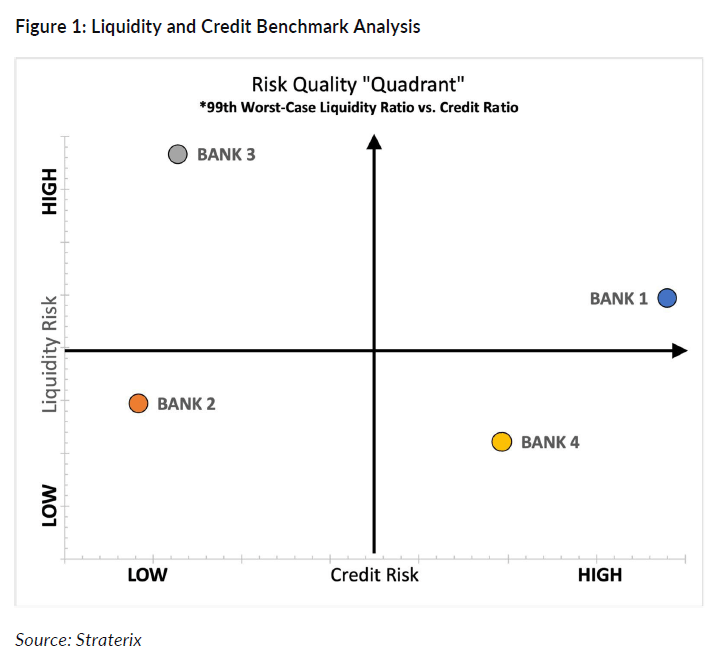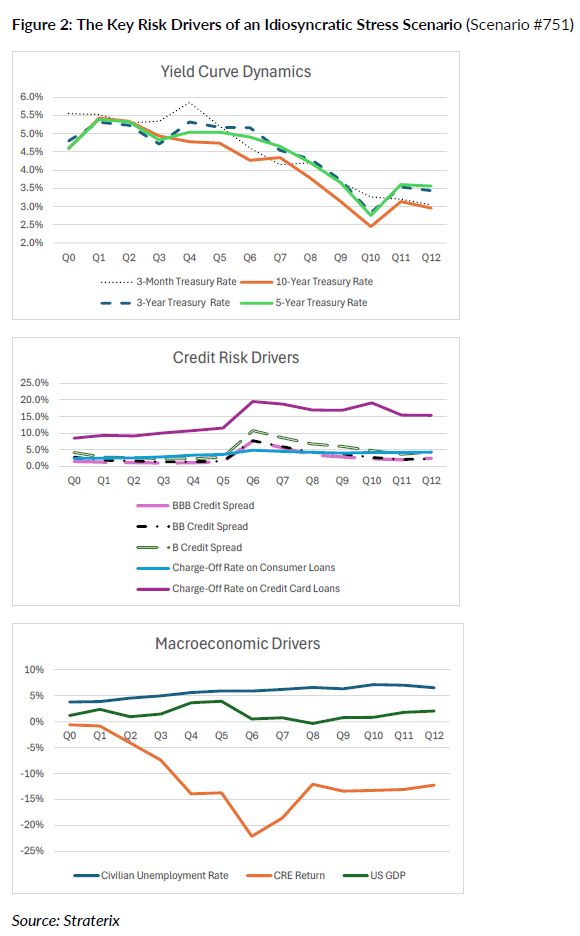
Starting with the pandemic and running through last year’s regional banking crisis in the U.S., a series of extreme, highly unpredictable events placed the spotlight on risk management inefficiencies. The same blame seems to get passed around from event to event: the models that were used overrelied on historical data and the stress tests that were employed by regulators failed to consider the proper scenarios.
Now, as we turn the page to 2024 and look ahead toward the remainder of 2024, risk managers must ask themselves not only about the steps they can take to be better prepared for tail risks but also to more accurately forecast the predictable, more probable threats specific to their firms’ portfolios. This is not a simple task, but it’s still achievable.
Calls for more comprehensive stress testing with more scenarios have come from both regulators and industry experts – like the Group of 30 (G30). However, critics of this approach argue that more scenarios breed more complexity without a substantial benefit. Instead, they contend, regulators should explore alternative analytical techniques.
So, who’s right?
To answer this question, we first must consider the Federal Reserve’s recent proposal to expand stress testing by creating a handful of exploratory stress scenarios that address inflation and other key macroeconomic factors.
On the one hand, critics contend that the Fed’s additional scenarios might not be detailed enough. On the other hand, even if they were more specific, they could only be effective after evaluating the probabilities of different outcomes.
The Importance of Probability
When risk managers or the regulators produce stress scenarios, whether direct or reverse, they are biased by their experience. Complicating matters further are extreme scenarios, like a massive cyberattack, an electromagnetic pulse or a meteor hitting Earth. Preparing for such singular events from an institutional standpoint is not feasible.
If we think about this through the lens of extreme, unpredictable, market-altering events, increasing the number of scenarios may not add significant value. Rather than striving for false scenario analysis precision, the goal should therefore be to first understand the probability of each particular scenario from the perspective of the level of danger that each scenario presents to a specific institution.
One way to go about this is to employ a multitude of automatically generated, machine-learning-driven scenarios, analyzed through the lens of reverse stress testing. This approach can unveil combinations of less radical shocks and market movements that pose specific dangers to an institution. A traditional bottom-up stress scenario design, in contrast, could miss such combinations of events, particularly if they haven’t been observed before.
It's important to remember that even if regional U.S. banks had been subject to the Fed’s annual CCAR stress test last year, the regional bank crisis of 2023 still would have occurred. Indeed, the defaults of SVB and other banks were caused by idiosyncratic risks that were specific to each institution. Consequently, they would not have been captured by CCAR scenarios – or by any of the Fed’s generic, newly-proposed inflationary scenarios, for that matter.
What the 2023 crisis should have taught us is that stress scenarios must be customized for each institution. But what steps can firms take toward this end?
Benefits of a Hybrid Approach
Most objections to multiple scenarios or exhaustive reverse scenario analysis are around the tremendous resources that are required for building them bottom up – and for evaluating a bank’s key performance indicators (KPIs) based on these scenarios. This is where automatically generated, full-range scenarios come in particularly handy.
To find both the most dangerous scenarios and the scenarios with the greatest possibility, auto-generated scenarios must incorporate idiosyncratic exposures. This will not only yield the probability of identified scenarios (obtained from the empirical distribution of outcomes) but also enable peer group benchmarking, which could be made available to financial institutions and their regulators.
Figure 1 shows an example of such a benchmark analysis for a peer group of four sample banks. Credit and liquidity ratios were calculated on 1,000 forward-looking scenarios, over a three-year horizon, on a quarterly basis. The models used in this example were calibrated to publicly available historical data.

In Figure 1, credit ratios for each of the four banks were calculated as charge-offs over the total of loans and leases, while liquidity ratios were calculated as cash and liquid assets over the total liabilities. To better understand the specific stress scenarios of our example banks, we need to take a deeper dive.
Figure 2 shows the critical risk drivers for scenario #751, which was selected because it represents both the 99th percentile worst-case liquidity ratio and the 95th percentile worst-case capital ratio for Bank 1. It is also stressful for Bank 4, while it’s quite moderate for Banks 2 and 3.
The selected scenario factors in rising unemployment and is characterized by its inverted yield curve, increased credit spreads and consumer defaults. Since the selected scenario represents specific stressful environment for two banks (1&4), it reveals information about their specific balance sheet composition – such as their exposure to commercial real estate.

The increased credit card charge-offs and rising unemployment rates depicted in Scenario #751 (Figure 2) would indicate a high probability of this adverse scenario coming to fruition. The scenario further shows that Bank 1 might consider protecting itself against inverted yield curve and reconsider extending and expanding their CRE lending.
By linking bank-specific data to auto-generated scenarios, you can not only identify the most probable and most dangerous outcomes for your firm but also figure out whether the selected scenarios are systemic or idiosyncratic. Risk managers who adopt this hybrid approach can identify early warning signals and develop proper contingency plans.
This strategy is analogous to early diagnostics of a potentially deadly disease, when the recommendations could be: (1) do nothing but keep observing; (2) apply light preventative treatment; or (3) eliminate/operate immediately.
Parting Thoughts
While a handful of manually constructed scenarios might capture some of the ripple effects of potential risks, their limitations are apparent. When a firm deploys only a few scenarios, ascertaining the probability of various outcomes becomes a huge challenge. This lack of understanding of probability, moreover, introduces a level of uncertainty that could hinder effective risk mitigation.
To avoid being blindsided by unforeseen events, and to conduct a more comprehensive exploration of potential risks and their associated ripple effects, it is therefore necessary to employ transparent, ML-based, auto-generated scenarios. The idea is to create a robust scenario analysis framework that accounts for the unexpected while leaving no stone unturned.
However, if all you’re doing is generating an exhaustive list of scenarios, your firm might suffer from information overload, making it extremely hard to discern significant risks from white noise. So, the trick is to analyze your auto-generated scenarios and only choose for further analysis those that are most probable for your firm and those that present the greatest danger.
Combining auto-generated scenarios with bank-specific exposures, and subsequently analyzing scenarios that could have the greatest impact on your organization, is a strategic approach that allows you to address key risks and to mitigate potential problems proactively. Focus on the scenarios that pose the most substantial threats, and then figure out where intervention can make a meaningful difference.
Ultimately, the goal is to achieve a comprehensive understanding of the risk landscape while pragmatically prioritizing actions.
Alla Gil is co-founder and CEO of Straterix, which provides unique scenario tools for strategic planning and risk management. Prior to forming Straterix, Gil was the global head of Strategic Advisory at Goldman Sachs, Citigroup, and Nomura, where she advised financial institutions and corporations on stress testing, economic capital, ALM, long-term risk projections and optimal capital allocation.
Topics: Metrics